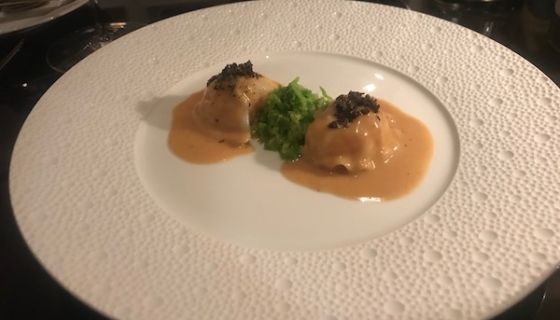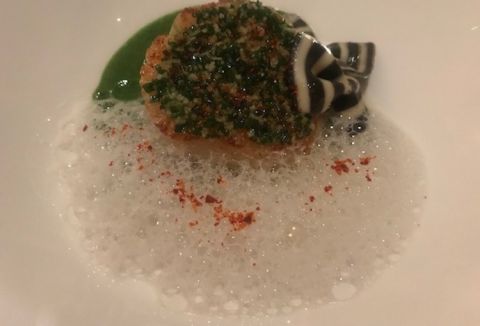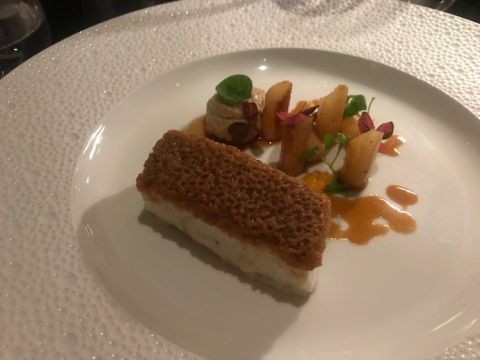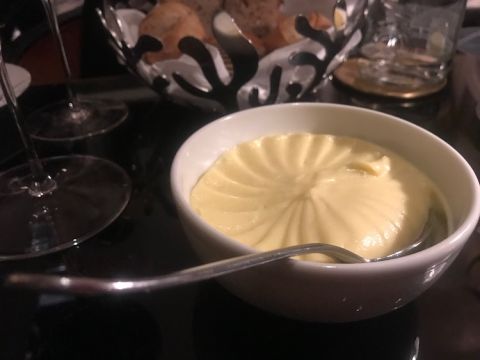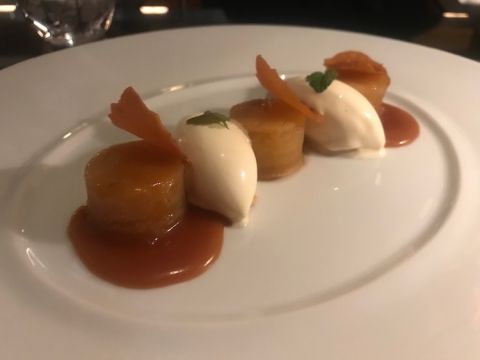The first time I caught sight of Ziad Joumblat, dressed in his customary black, was as he emerged late last year from the far end of the long open kitchen that is such an eye-catching feature of Le Comptoir Robuchon.
I then watched him as he stopped and chatted with executive chef Jeremy Page by the pass and then walked along its entire length, chatting to all the chefs including the pastry chefs at the far end. Then as he turned towards the room, he spotted the Parisian restaurant guru I was dining with and came to say hello.
After introductions had been made, I asked him whether and when he had time for a chat. ‘I am afraid it will have to be some time in 2020', Joumblat explained, ‘I am just in the middle of the busiest period of my career. I am opening seven restaurants before Christmas.’
When we finally sat down together a week or two ago, I began to get some idea of Joumblat’s sphere of influence. ‘Of the seven restaurants, three were in London. Le Comptoir and Le Deli Robuchon, which share a linked, underground kitchen. Then there was the opening of Big Fernand in Knightsbridge, the very French take on the very American hamburger. Finally, there were four new branches of Lateral restaurants in Spain, of which I am chairman, two in Madrid, one in Zaragoza and the fourth was in Málaga. It was the busiest time of the year for me ever', he explained with a smile.
Joumblat’s CV mirrors this varied mix of cuisines. A degree from Cornell was followed by years as an operator in his native Beirut. This period was followed by time in private equity in London, where he now lives, before he reverted to life as a restaurateur. It is a varied career that has obviously made him happy, even if he has never quite found the perfect role for himself.
But it is the past 18 months, from the first presentation to British Land, the developers of the site that houses the two Robuchon establishments, that have given him the greatest satisfaction as well as the biggest challenges.
‘The first thing we had to do was to change the name. L’Atelier (the workshop) du Robuchon closed in Covent Garden in April 2019 but that name was too formal. It evoked a special occasion. Le Comptoir, the counter, by contrast is more relaxed, more appealing to today’s young professionals. And also we had to find a location where there was enough business to guarantee a lunch trade. Today, any restaurant needs more than the single leg of a good dinner trade to stand on.’
Then there was the particular challenge of two large but rectangular rooms. ‘The simplicity of the rooms makes their running quite easy for the general manager but we had to make them attractive to the customer. In Le Comptoir, we ran a long banquette down the right hand side so that everyone can have a good view of the chefs at the open kitchen. And we put large mirrors at an angle behind them, too.’
This leaves an odd space right down the middle of the restaurant but the menu should immediately appeal to anyone who ever tasted Robuchon’s food (he died in 2018) or anyone who appreciates the flavours of well-executed but predominantly French food.
We began with ‘la papillote’, two langoustines crisply fried and served with a pesto sauce, as good a test of any kitchen as the lightness and cleanliness of the batter speaks volumes for the kitchen’s attention to detail. The kitchen passed with flying colours. Above are the ruffled ravioli also served as a possible preamble to the main meal.
We then decided to experiment. Jancis ordered a dish listed as ‘la saint-jacques’ but we were both astonished at its appearance. As perhaps you can see above, it was the biggest, single mollusc of its species I had seen in a long, long, time. It had been sautéed before being presented on the plate alongside a coconut emulsion and some spicy coriander.
I was intrigued by a dish called ‘le bouillon’, listed under the sharing main courses. It contained shiitake mushrooms, eel and kombu (kelp) broth. Knowing of Robuchon’s time in Japan and his respect for Japanese cooking (which left a pronounced impression on him and where he still generates many loyal customers), I wanted to see how well this London kitchen could reproduce these intricate flavours. It was so good that when I asked Page later how much time he had spent in Asia, his response was surprising. ‘None at all', he replied in his mid-Channel accent, 'just 14 years working for Robuchon in Paris and London.’
Of our two main courses, one was disappointing. The pigs’ trotter was not the modern, crisp interpretation of this ingredient but rather a mushy version lacking the oomph of the promised mustard or tarragon. The halibut (above), by contrast, was crisp on the outside and melting in the middle, the perfect foil for a serving of Robuchon’s famous ‘pommes purées’, equal measures of butter and potato (below).
With a glass of Riesling and a glass of Faugères, served by the sommelier Charlotte, Jeremy’s wife, plus the decidedly deconstructed tarte Tatin below and service, my bill came to £138.38 for two.
Robuchon left a great culinary legacy that today has spread around the world. Le Comptoir is the latest interpretation but it is unlikely to be the last. Anywhere, however, where the food is so good and the service so friendly, has to appeal. Perhaps the photo of the great man that hangs at the top of the staircase to the basement kitchen holds the key.
Le Comptoir Robuchon 6 Clarges Street, London W1J 8AE; tel +44 (0)20 8076 0570

